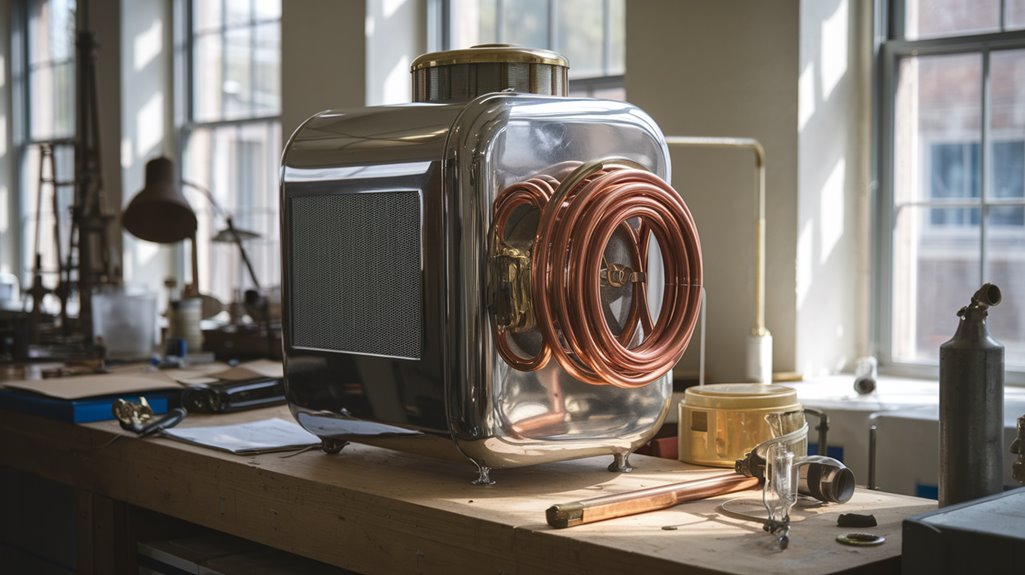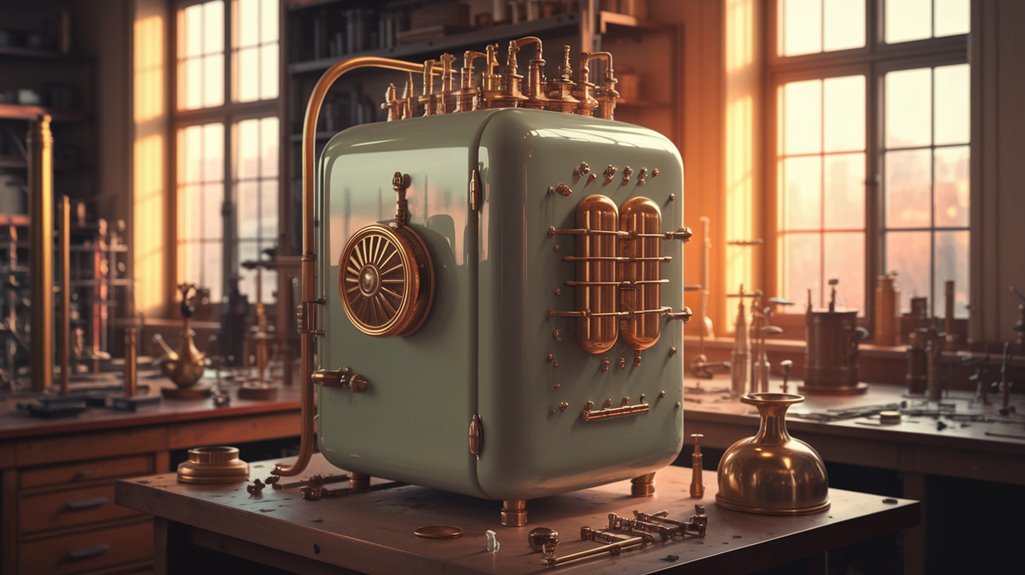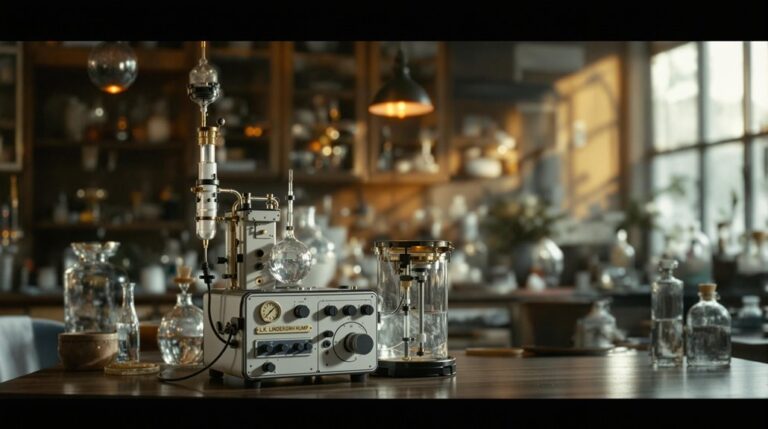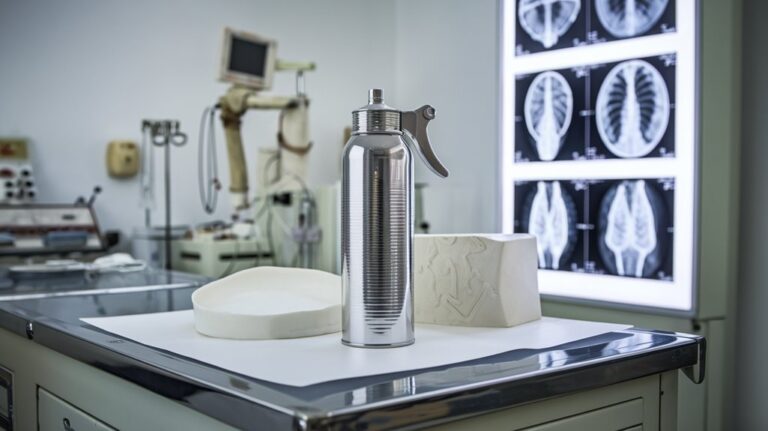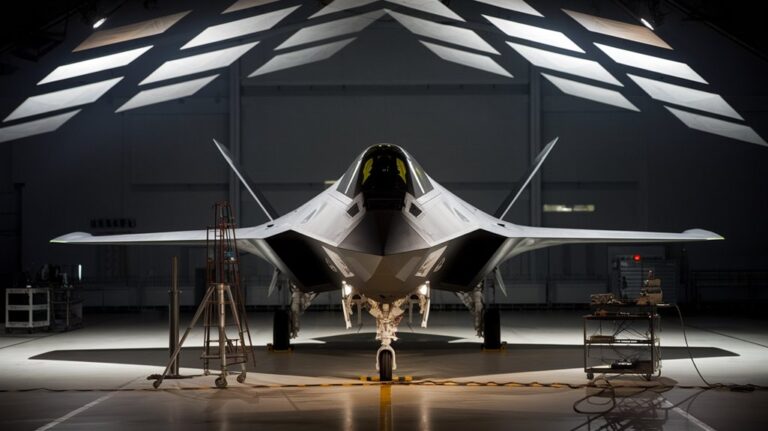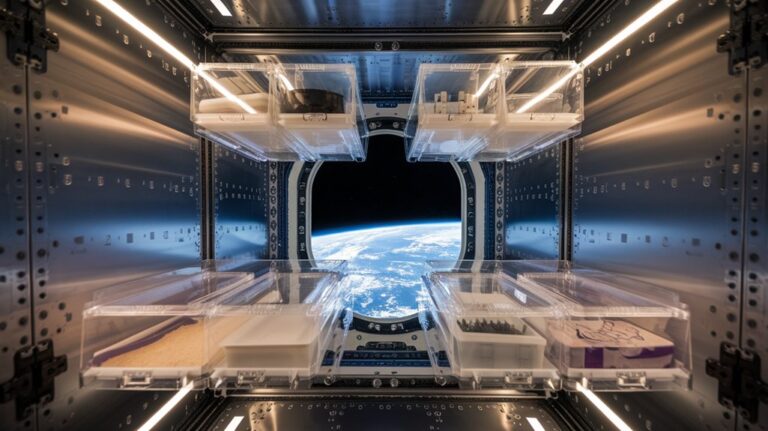Einstein’s Other Invention: A Safer, Greener Fridge
You've probably heard of Einstein's theory of relativity, but did you know he also invented a revolutionary refrigerator? While today's household fridges rely on potentially harmful chemicals and complex mechanics, Einstein's design offered an elegant solution without moving parts. His collaboration with Leo Szilard wasn't just about keeping food cold—it was a response to a deadly problem that plagued early cooling systems. Let's explore how this brilliant mind tackled an everyday challenge.
The Tragedy That Sparked an Innovation
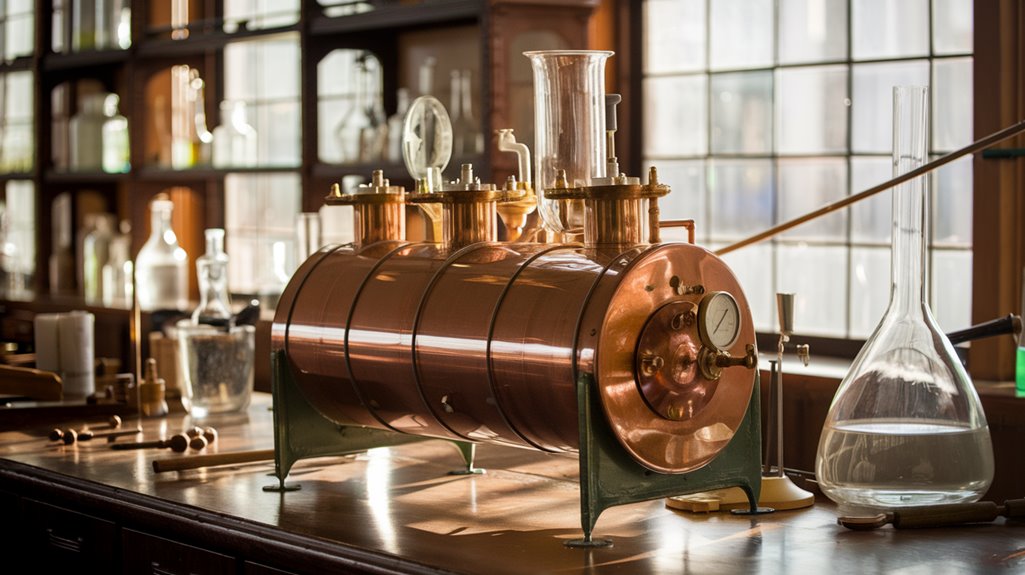
While modern refrigerators are relatively safe, their early predecessors posed serious threats to households. In the early 20th century, refrigerators commonly used toxic gases like ammonia, and their mechanical fragility often led to dangerous leaks.
You wouldn't think twice about your fridge today, but back then, it could be lethal.
A tragic impact struck when an entire family died from toxic gas exposure due to a refrigerator leak. This devastating incident became the innovation catalyst that spurred Albert Einstein and Leo Szilard into action. Just as conscious decision-making is critical in effective writing, their response to this tragedy was carefully considered.
They recognized that households needed a safer alternative to the hazardous cooling systems of the time. Their response was to develop a non-toxic, more reliable refrigerator design that would protect families from similar tragedies and revolutionize home refrigeration. Their innovative solution resulted in a refrigerator that had no moving parts and operated without electricity.
Einstein and Szilard's Revolutionary Design
After witnessing the deadly risks of early refrigerators, Einstein and Szilard commenced on their innovative cooling system design in 1926. Their breakthrough concept eliminated moving parts and operated through a unique three-fluid system using water, ammonia, and butane.
Einstein's ingenuity and Szilard's vision resulted in a design that could theoretically function for up to 100 years without mechanical failures. The inspiration came when a family was poisoned due to a faulty refrigerator seal. The duo went on to secure 45 patents across six different countries.
You'll find their invention particularly remarkable for its time – it maintained constant pressure without a compressor and prevented toxic gas leaks that plagued conventional models.
While the design proved less efficient than existing refrigerators and never achieved commercial success due to the Great Depression, it demonstrated how theoretical physics could solve practical problems.
The patents were eventually purchased by Electrolux, though the design wasn't developed further.
How the Refrigerator Works: A Simple Yet Brilliant System
Despite its complex-sounding principles, the basic operation of a refrigerator follows a straightforward heat transfer process. Think of it as a continuous cycle where heat moves from one place to another, much like a conveyor belt of temperature. The process relies on a closed refrigeration circuit that continuously circulates refrigerant through the system.
In Einstein's design, you'll find the refrigeration cycle works through absorption rather than mechanical compression. When heat is applied, it causes a liquid to boil at low pressure, creating a cooling effect inside the refrigerator. The expansion valve helps control this process by regulating the refrigerant flow into the system.
What makes this system brilliant is its simplicity – there are no moving parts to wear out or break down. The heat transfer occurs naturally through pressure changes and phase shifts of the refrigerant.
Unlike conventional fridges that use harmful freons, Einstein's system can run on sustainable energy sources like solar power, making it both safer and more environmentally friendly.
The Path From Patent to Present Day
When news of a family's tragic poisoning by toxic refrigerator fumes reached Einstein and Szilard in the 1920s, it sparked their mission to create a safer cooling system.
Despite filing numerous patents between 1926 and 1932, they faced significant patent challenges. Their timing couldn't have been worse – the Great Depression hit, and the emergence of CFCs seemed to solve safety concerns.
The historical context of their invention is particularly fascinating. While companies like Electrolux and AEG showed initial interest, economic constraints prevented commercial development. Their innovative design utilized no moving parts to minimize potential mechanical failures.
Yet, their work hasn't been forgotten. Today, Oxford University's Malcolm McCulloch has revived their design, seeing its potential for developing regions without reliable electricity.
His team believes that by using different gases, they can quadruple the refrigerator's efficiency, making Einstein and Szilard's vision more relevant than ever.
Modern Applications and Environmental Benefits
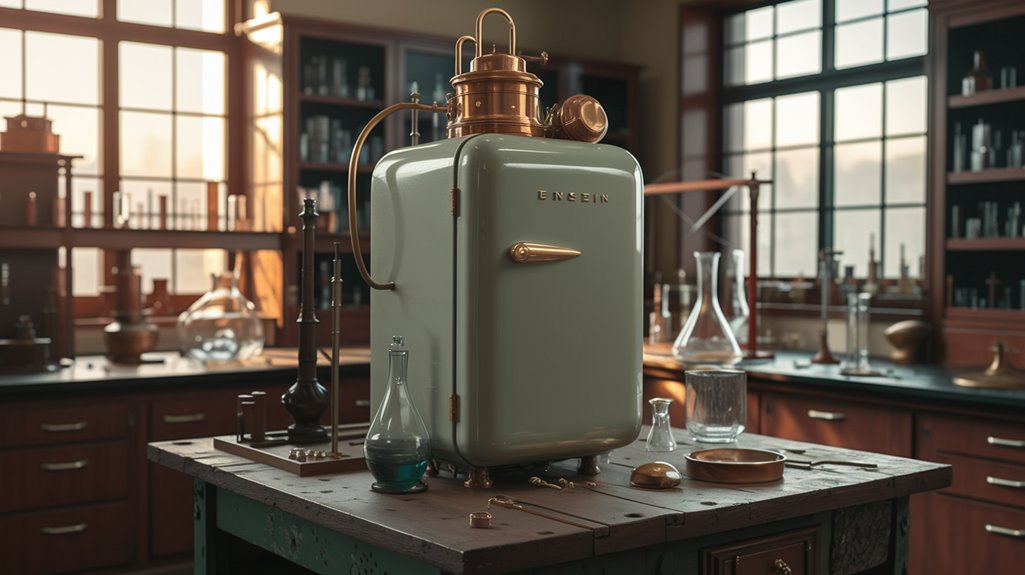
The modern revival of Einstein and Szilard's refrigerator design opens up remarkable possibilities for sustainable cooling worldwide.
Researchers at Oxford University, led by Malcolm McCulloch, are actively working to make the system four times efficient.
A recent three-year project exploring the design's potential demonstrates growing interest in this innovative technology.
You'll find this innovative cooling technology particularly valuable in rural areas without electricity, where it can operate using solar power and natural pressurization.
What makes this invention truly extraordinary for our planet's future are its environmental benefits:
- Zero greenhouse gas emissions, eliminating the harmful effects of freons found in conventional fridges
- Incredible durability with a potential lifespan of 100 years, reducing waste and replacement needs
- Energy efficiency that puts modern refrigerators to shame, operating without electricity or compressors
As sustainable solutions become increasingly essential, Einstein's refrigerator design offers a promising answer to global cooling needs, especially in developing regions seeking eco-friendly alternatives.
Reimagining Einstein's Legacy in Sustainable Cooling
As modern engineers reimagine Einstein's refrigeration legacy, they're discovering groundbreaking ways to adapt his century-old design for today's sustainability challenges.
You'll find that his innovative cooling system's core principles – using natural refrigerants and avoiding toxic gases – align perfectly with current environmental priorities.
What makes this sustainable technology particularly relevant is its potential for solar integration and operation without electricity. The system can be enhanced through thermally driven chillers that effectively harness solar energy for cooling solutions.
You can see how this could revolutionize cooling in developing regions while reducing greenhouse gas emissions.
 zero water consumption cooling methods.
zero water consumption cooling methods.
The result? A promising future where you might cool your food using a modernized version of Einstein's safer, greener innovation, powered by renewable energy and free from harmful emissions.

